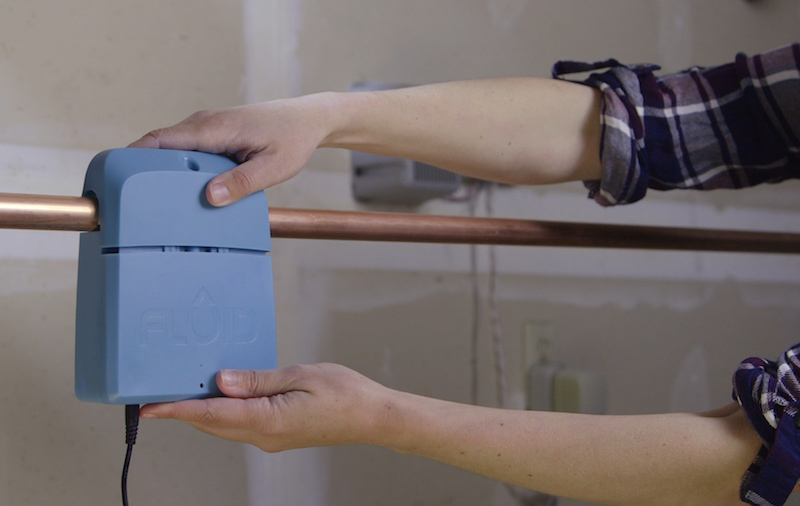Top Water Leak Detection Techniques to Safeguard Your Building from Water Damages
Top Water Leak Detection Techniques to Safeguard Your Building from Water Damages
Blog Article
Ingenious Solutions for Very Early Detection of Water Leakages in Structures and Framework
From cutting-edge leakage discovery modern technologies to the deployment of IoT sensors for real-time monitoring, the landscape of leak prevention is advancing rapidly. Automated water flow analysis systems are improving how leaks are identified and resolved, paving the way for a positive method to water leak detection.
Advanced Leak Detection Technologies
Advanced leakage detection innovations, furnished with sophisticated sensing units and formulas, play a crucial role in promptly recognizing and determining water leakages in different settings. These technologies employ a mix of acoustic, thermal, and electro-magnetic picking up approaches to identify leakages precisely. Acoustic sensing units discover the noise of leaving water, allowing for precise localization of the leakage resource. Thermal imaging finds temperature changes triggered by water leak, offering another reliable approach for leak recognition. Electro-magnetic sensors can recognize adjustments in electromagnetic fields triggered by water, using yet another layer of leakage detection capability.

IoT Sensors for Real-Time Monitoring
In the realm of modern water leak detection, the combination of IoT sensing units for real-time monitoring represents a crucial advancement in improving positive leakage discovery capabilities. These sensors provide continuous tracking of water supply, giving real-time information on water flow rates, pressure variations, and temperature modifications. By leveraging IoT technology, these sensors can discover even the tiniest abnormalities in water use patterns, making it possible for very early identification of prospective leakages prior to they rise right into significant concerns.
IoT sensing units transfer data to a central system, where innovative formulas examine the info and produce informs or alerts when abnormalities are detected. This real-time monitoring capacity permits homeowner or center supervisors to immediately attend to leaks, reducing water damage, lowering fixing prices, and saving water resources.
Furthermore, IoT sensors can be integrated with structure administration systems, enabling for automated responses to identified leakages, such as closing off water shutoffs or activating pumps to mitigate the influence of leaks. Overall, the execution of IoT sensing units for real-time tracking significantly boosts the effectiveness and effectiveness of water leakage detection in structures and infrastructure.
Artificial Intelligence Algorithms for Leakage Prediction

One secret advantage of making use of artificial intelligence for leak prediction is its capacity to constantly learn and boost its accuracy with time. As even more data is accumulated and fed right into the algorithm, it can improve its predictions and adapt to transforming conditions, inevitably enhancing the integrity of leakage discovery systems.
Furthermore, machine understanding algorithms can aid in determining subtle signs of leakages that may go undetected by standard monitoring approaches. water leak detection. By evaluating complicated information embed in real-time, these formulas can supply very early warnings and signals, permitting punctual intervention and preventative maintenance to minimize potential water damages and linked costs
Making Use Of Thermal Imaging for Leak Detection
Thermal imaging modern technology uses a promising technique for identifying water leakages in numerous systems and infrastructures. By utilizing infrared radiation and temperature variances, thermal imaging video cameras can determine surprise leakages that are not conveniently noticeable to the nude eye.
Among the crucial benefits of thermal imaging for leak detection is its non-intrusive nature. Unlike standard techniques that might call for burglarizing walls or floorings to find site leaks, thermal imaging enables non-destructive testing. This not just conserves time and lowers prices however likewise reduces interruption to the building or infrastructure being assessed. In addition, thermal imaging can promptly check big areas, giving a comprehensive review of prospective leak resources in a timely manner. Overall, making use of thermal imaging technology boosts the performance and precision of water leakage detection, making it an important device for keeping the stability of buildings and infrastructures.
Automated Water Flow Evaluation Solutions
Just how can automatic water circulation analysis systems revolutionize the discovery and management of leakages in various systems and frameworks? Automated water flow evaluation systems offer an aggressive method to leakage detection by continuously monitoring water circulation prices and patterns. internet By establishing standard data, these systems can swiftly identify variances that may suggest a leakage, enabling punctual intervention to avoid extensive damage.
These systems make use of advanced algorithms to evaluate real-time information and offer prompt alerts when anomalies are detected, permitting speedy activity to be taken. Additionally, automated water circulation evaluation systems can be integrated with building monitoring systems or IoT systems, enhancing general effectiveness and allowing remote surveillance capabilities.
Additionally, the data collected by these systems can be used for predictive maintenance purposes, aiding to recognize potential weak points in the infrastructure prior to leaks occur. In general, the implementation of computerized water circulation evaluation systems can considerably enhance leak detection and management techniques, inevitably bring about set you back savings, decreased water wastage, and increased sustainability in structures and facilities.

Final Thought
Finally, the integration of advanced leak detection innovations, IoT sensors, go to the website artificial intelligence formulas, thermal imaging, and automatic water circulation evaluation systems uses ingenious options for very early discovery of water leaks in buildings and facilities. These innovations allow real-time tracking, forecast of leakages, and reliable discovery techniques to stop water damages and waste. Implementing these options can help in maintaining the integrity and sustainability of water supply in numerous setups.
Report this page